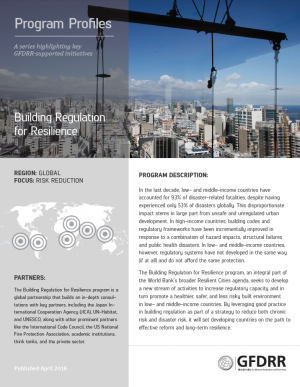In the last decade, low- and middle-income countries have accounted for 93% of disaster-related fatalities, despite having experienced only 53% of disasters globally. This disproportionate impact stems in large part from unsafe and unregulated urban development. In high-income countries, building codes and regulatory frameworks have been incrementally improved in response to a combination of hazard impacts, structural failures and public health disasters. In low- and middle-income countries, however, regulatory systems have not developed in the same way (if at all) and do not afford the same protection.
The Building Regulation for Resilience program, an integral part of the World Bank’s broader Resilient Cities agenda, seeks to develop a new stream of activities to increase regulatory capacity and in turn promote a healthier, safer, and less risky built environment in low- and middle-income countries. By leveraging good practice in building regulation as part of a strategy to reduce both chronic risk and disaster risk, it will set developing countries on the path to effective reform and long-term resilience.

